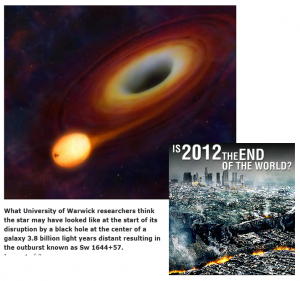 Black hole blasts 3.8 billion light year beam at Earth
Black hole blasts 3.8 billion light year beam at Earth
Research led by astronomers at the University of Warwick has confirmed that the flash from one of the biggest and brightest bangs yet recorded by astronomers comes from a massive black hole at the centre of a distant galaxy. The black hole appears to have ripped apart a star that wandered too close, creating a powerful beam of energy that crossed the 3.8 billion light years to Earth. The extreme brightness of this event comes from the fact that it illuminated only a small fraction of the sky, pointing a jet of light towards the Milky Way, which was detected at Earth 3.8 billion years after the star was ripped apart.
Dr Andrew Levan, lead researcher on the paper from the University of Warwick “Despite the power of this the cataclysmic event we still only happen to see this event because our solar system happened to be looking right down the barrel of this jet of energy”.